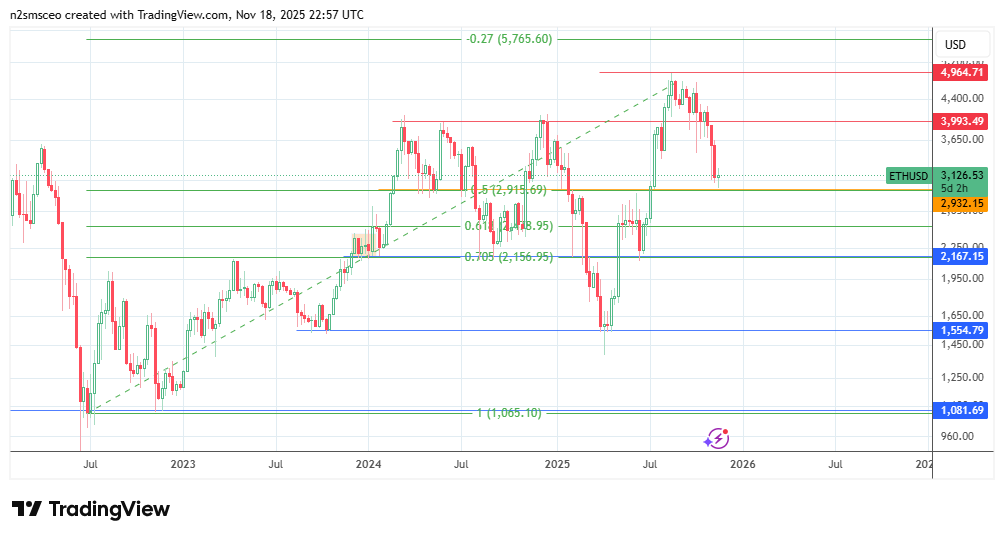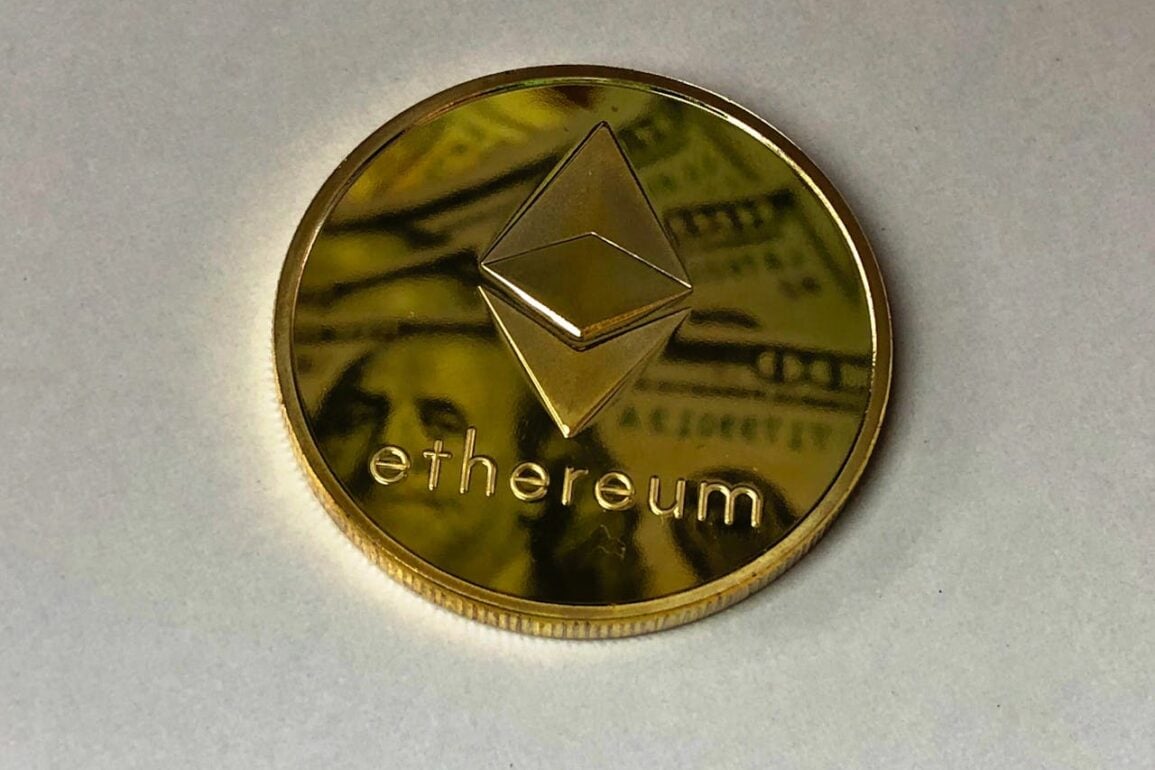Introduction
Ethereum remains the number 2 crypto by market cap, and the recently implemented upgrades have helped to keep prior Ethereum price predictions in place. The discussion below highlights the importance of these upgrades and their expected market impact on Ethereum price predictions, amid the mid-November 2025 crypto market selloff.
Section 1: Core Concept and Current Market Context
Ethereum’s upgrades are critical to its survival and ability to stay ahead of competing blockchains like Solana.
Ethereum is now 11 years old as of writing. The earlier versions may have wowed, but the demands the newer smart contracts placed on the network exposed three significant issues: cost, network congestion, and user-friendliness. Competitors entered the space with lower gas fees, faster speeds, even during overload, and easier usage. Ethereum had to adapt or risk becoming a relic of the smart contract age.
How has Ethereum Improved?
Adaptation has been achieved through several upgrades over the last three years. The most recent was the Pectra upgrade in May 2025, performed to improve efficiency, lower gas fees, and enhance the overall UX. December 2025’s upcoming Fusaka hard fork is expected to build on Pectra’s gains, raising the block gas limit from 45M to 150M. Other changes will introduce the Verkle and PeerDAS trees to enable more transactions per block at lower gas fees.
Section 2: Data Analysis and Evidence
The previous section mentioned Ethereum’s performance deficits. How have recent upgrades improved the situation?
a) Impact of Upgrades on Gas Fees
A 37-53% post-pectra drop in mainnet gas fees has been an immediate impact of this upgrade. This fee reduction was felt even more by Layer-2 protocols, with fees dropping by as much as 70% post-pectra. This radical drop in L2 gas fees is a consolidation of the gains of the earlier Dencun upgrade, which led to a 90-98% gas fee reduction in some instances through improvements in data storage.
b) Impact on User Adoption of Ethereum’s L2
The Dencun upgrade introduced blobs, a cheaper way for L2 networks on Ethereum to store data. Data storage accounts for 95% of the gas fees on Ethereum. One of the earlier problems that made gas fees so high was the inefficiency in the data transmission and storage systems on the Ethereum blockchain.
By introducing blobs via the EIP-4844 proto-danksharding, this temporary system of data storage and the addition of extra storage space on Ethereum made the process more efficient, thereby reducing costs. Pectra built on this, and the data shows an overall increase in L2 user adoption. Blob usage has risen from 21K to 28K, and 60% of all DeFi transactions on Ethereum are now occurring on layer-2, directly attributable to increased blob availability and lower costs.
The overall impact of the Dencun and Pectra upgrades, intended to shift transactional activity to L2 while keeping L1 open as the settlement layer, has been largely achieved.
c) Impact on Staking and Validation
The lowering of gas fees has come at a trade-off: lower fees mean reduced revenue per transaction. However, Ethereum aims to offset the negative impact on its revenue stream from lower costs by increasing platform usage for traditional blockchain and DeFi activities. Staking and validation are two areas where growth buildup could help offset the revenue drop from lower gas fees.
What do the numbers say?
To reduce operational overheads for large-scale validators, the Pectra upgrade increased the maximum effective validator balance from 32 ETH to 2,048 ETH. Despite active validators reducing by 16,000 and the merger of more than 11,000 validators, total staked Ethereum actually rose to 36.8M ETH. Staked Ethereum now constitutes 30% of Ethereum’s total supply as of end-Q3 2025.
The data indicates that Ethereum remains on a path to long-term sustainability.
d) Impact on Ethereum Price and DeFi
Ethereum sold off sharply at the start of 2025. However, a strong 3rd-quarter rally of more than 70% followed, driven mainly by the positive reception of the Pectra upgrade’s impact in Q2 2025 in investment circles. Ethereum also posted the most significant quarterly increase in total value locked (TVL) since early 2024, rising to $115 billion by the end of Q3 2025.
Section 3: Comparative Scenarios
What are the possible outcomes when it comes to Ethereum’s price prediction pathways?
Scenario A: Conditions under which the trend continues -> Long term, Ethereum is now in the midst of a multi-year consolidation after the uptrend paused in 2021. The consolidation range is large, extending from the November 2022 low at 1081 to the August 2025 high at 4957. There are several intervening support and resistance areas. The bull case for Ethereum becomes feasible on a break of the 2025 high, which lies just above the December 2021 high at 4936.
Scenario B: Conditions that would cause a reversal -> A reversal has to follow a breakdown of the 1081 low of Nov 2022, which would expose some of the support levels seen in 2020.
If the bull case or bear case parameters are not met, then price will continue to range trade between the price borders defined. Traders would have to navigate the minor support and resistance levels found within this price range.
Section 4: Broader Implications
Ethereum is one of those crypto assets whose value remains in its long-term viability. It is best suited for investors who want long-term value without having to navigate the mine-laden environment of short-term outlooks. Typically, retail investors panic during short-term selloffs, such as the one seen on November 16-18, 2025. But these price drops are usually absorbed by discerning investors, who see them as cheaper opportunities to tap into Ethereum’s long-term value.
The crypto market tends to see massive demand in a risk-on environment. You are unlikely to see significant shifts from other markets in the absence of global, systemic price shocks. For Ethereum, follow the upgrades and follow the long-term value proposition that L2 brings to the table.
Section 5: Expert Insight
Traders with a short-to medium-term outlook can focus on the weekly chart and trade around the identified support and resistance levels within the context of the current long-term consolidation.

Rejection wicks at the 2932 support (50% Fibonacci retracement) followed by a closing penetration above 3993 indicates mid-range defence and a new potential to re-attack the all-time high at 4957. A new high point to long-term continuation, with the Fibonacci extension at 27% pointing towards 5765 as the next long-term target. This scenario is the bull case.
A bear case scenario follows if the bulls fail to defend 2480 (61.8% Fibonacci retracement level). This exposes the 2167 downside target (70.5% Fibonacci retracement and Jan 2024/June 2025 lows). If this level fails, it is hard to rule out a deeper correction to the October 2023 low at 1554.
Disclaimer: This is for educational purposes only and is not investment advice or an invitation to buy or sell at any of the price levels above.
Section 6: References and Sources
Alchemy. (2025, May 7). What is the Ethereum Pectra upgrade? Dev guide to 11 EIPs. Alchemy. https://www.alchemy.com/blog/ethereum-pectra-upgrade-dev-guide-to-11-eips
Consensys. (2025, May 7). Ethereum Pectra upgrade: Everything you need to know. Consensys. https://consensys.io/ethereum-pectra-upgrade
QuickNode. (2025, October 14). Ethereum Fusaka upgrade: What you need to know. QuickNode Blog. https://blog.quicknode.com/ethereum-fusaka-upgrade-what-you-need-to-know
Coin Metrics. (2025, May 27). The after-effects of Ethereum’s Pectra upgrade (State of the Network). Coin Metrics. https://coinmetrics.io/state-of-the-network/the-after-effects-of-ethereums-pectra-upgrade/
Coin Metrics. (2025, September 23). Ethereum update: Can further scaling return value to ETH? (State of the Network). Coin Metrics. https://coinmetrics.io/state-of-the-network/analyst-update-ethereum-september-2025/
Galaxy Digital Research. (2025, May 15). Ethereum blob market post-Pectra: Cost collapse, capacity unlocked. Galaxy. https://www.galaxy.com/insights/research/ethereum-blob-market-post-pectra
Blockworks. (2025, September 12). Ethereum’s paradox: Usage at all-time highs as fees plummet. Blockworks. https://blockworks.co/news/ethereums-paradox-usage-at-all-time-highs-as-fees-plummet
This article was originally published on InvestingCube.com. Republishing without permission is prohibited.


